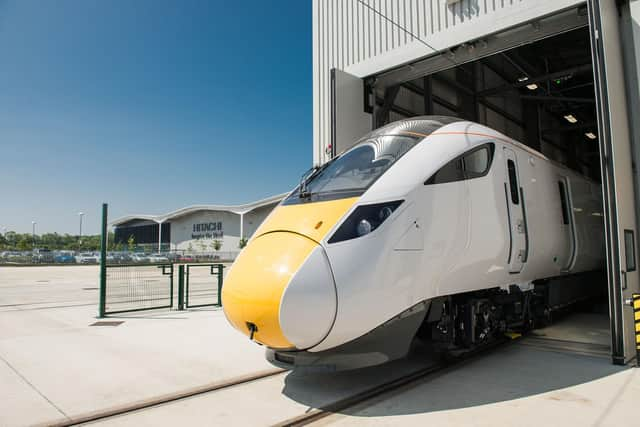Passengers hit by severe disruption after train cracks 'caused by excess movement'
Hitachi-built Class 800 trains were taken out of service last May as a precaution, by a number of operators, including London North Eastern Railway (LNER), TransPennine Express (TPE) and Hull Trains.
Safety regulator the Office of Rail and Road (ORR) said “stress corrosion cracking” was found just above the wheels, because carriages were experiencing more movement than they were designed for.
Advertisement
Hide AdAdvertisement
Hide AdIt is not known for certain why this happened but potential factors identified include wheel wear – which is when the shape of wheels changes during use – and track design.


The ORR also found cracks on lifting points – which allow carriages to be raised during maintenance work – resulted from the use of a particular type of aluminium which was corroded by chloride in the air.
The regulator stated: “Moist air can have significant levels of chloride in it picked up from various factors such as from salt used for clearing ice.”
The withdrawal of Class 800 trains until additional safety checks were introduced led to a week of severe disruption to services last May.
Advertisement
Hide AdAdvertisement
Hide AdThe ORR said “stringent mitigation measures” such as regular inspections were put in place to allow trains to re-enter service “without passenger safety being compromised”.
The trains have “performed as specified” and “no safety failures” have been recorded.
Recommendations issued by the regulator include the rail industry collaborating to evaluate whether standards for train design, manufacture and maintenance take into account pressures created by train movement on Britain’s railways.
It urged Hitachi to conduct a formal review of its welding processes, and for train designers to consider what steps should be taken to ensure protection of structures when 7000 series aluminium components are used, as they were in building Class 800 trains.
Advertisement
Hide AdAdvertisement
Hide AdThe report also called on the industry to develop a process for responding to similar “crisis events” in the future.
Hitachi and its partners are preparing to launch a major programme of work to repair 1,247 Class 800 trains, and 487 of its Class 385 and 395 trains.
This is expected to take place over the next six years to minimise the number of trains taken out of service at any one time.
A Hitachi Rail spokesman said: “The ORR’s report identifies that all Hitachi trains meet relevant standards and that we took the appropriate action to prioritise safety and maintain train availability.
Advertisement
Hide AdAdvertisement
Hide Ad“The report also provides a detailed account of the tireless work to simultaneously keep trains running safely while working towards the long-term solutions.
“The proposed engineering solutions outlined in the report are currently being reviewed by all partners.
“We are working together to finalise the plan for their implementation, while always prioritising safety and train availability to support consistent passenger services.”
